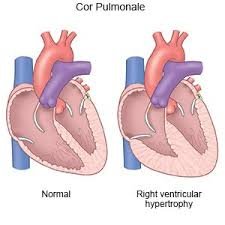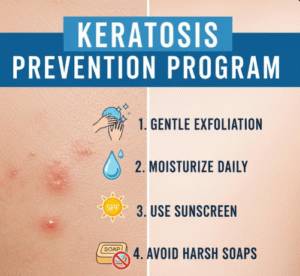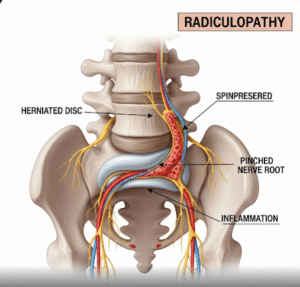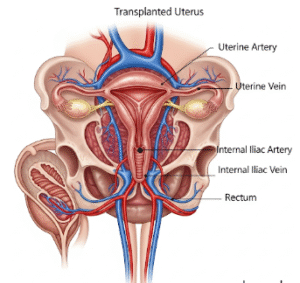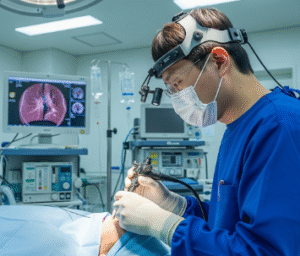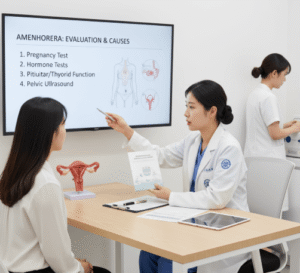Overview
A broken nose, medically known as a nasal fracture, occurs when the bones or cartilage of the nose are fractured or displaced due to trauma. Nasal fractures are among the most common facial injuries, often caused by sports accidents, falls, physical altercations, or traffic incidents.
In Korea, broken noses are treated in otolaryngology (ENT) and facial trauma clinics, where patients receive prompt assessment, realignment, and surgical correction if necessary. Korean healthcare emphasizes minimally invasive procedures, functional restoration, and aesthetic outcomes to ensure proper breathing and facial symmetry.
What is a Broken Nose?
A broken nose is a structural injury to the nasal bones or cartilage, sometimes involving displacement or misalignment. Severity can range from minor hairline fractures with minimal deformity to severe fractures causing swelling, bleeding, and facial asymmetry.
Types of nasal fractures include:
- Simple fractures: Single break without significant displacement
- Compound fractures: Breaks with displacement or involvement of surrounding structures
- Comminuted fractures: Nose broken into multiple pieces
- Nasal septum fracture: Involves the cartilage separating the nostrils, often affecting breathing
Symptoms
The symptoms of a broken nose may include:
- Nasal pain and tenderness
- Swelling and bruising around the nose and eyes
- Visible deformity or crooked appearance of the nose
- Nosebleeds (epistaxis)
- Difficulty breathing through the nose due to obstruction
- Crepitus: A crackling or grinding sensation when touching the nose
- Nasal congestion or obstruction
Immediate symptoms often develop within hours, while swelling may peak in the first 1–2 days after injury.
Causes
Broken noses are primarily caused by direct trauma or impact to the face:
- Sports injuries (e.g., soccer, basketball, martial arts)
- Falls from height or accidents at home or work
- Physical assault or fights
- Traffic accidents
- Recreational activities such as cycling or skiing without proper protective gear
The severity of the fracture depends on force, angle of impact, and pre-existing nasal structure.
Risk Factors
- Active participation in contact sports without protective gear
- History of previous nasal fractures, increasing susceptibility
- Children and adolescents, due to developing facial bones
- Occupational hazards, including jobs with risk of falls or facial trauma
- Alcohol consumption, which may increase risk of falls or altercations
- Osteoporosis or weak bones, which can make the nasal bones more fragile
Complications
Untreated or improperly managed nasal fractures may lead to:
- Persistent nasal deformity affecting appearance
- Chronic nasal obstruction or difficulty breathing
- Septal hematoma or abscess, potentially causing cartilage damage
- Nasal septum deviation requiring surgical correction
- Frequent nosebleeds
- Sinus infections if nasal passages are affected
- Pain or sensitivity during facial trauma post-injury
Prevention
Preventive measures focus on protecting the nose and minimizing trauma risk:
- Use of protective gear during sports (face masks, helmets)
- Safe practices in recreational activities
- Fall prevention at home, including secure flooring and handrails
- Avoiding physical altercations
- Prompt treatment of previous nasal injuries to maintain structural integrity
- Proper nutrition to maintain bone strength
Treatment Options in Korea
Diagnosis
Early and accurate diagnosis is crucial to prevent long-term complications:
- Physical examination: Assess swelling, bruising, deformity, and nasal airway
- Palpation: Checks for bone displacement or tenderness
- Imaging studies: X-rays or CT scans for complex fractures or septal involvement
- Endoscopic evaluation: Occasionally used for internal assessment of septum and nasal passages
Non-Surgical Management
Minor fractures may be managed conservatively:
- Ice packs to reduce swelling in the first 24–48 hours
- Pain relief: NSAIDs or acetaminophen
- Nasal decongestants for temporary breathing relief
- Observation: Allowing swelling to subside before evaluating realignment needs
- Avoiding pressure on the nose during healing
Surgical Management
- Closed reduction: Manual realignment of nasal bones under local or general anesthesia, typically within 7 days of injury
- Open reduction and internal fixation: Required for complex or severely displaced fractures
- Septoplasty or rhinoplasty: To correct septal deviation or aesthetic concerns after fracture
- Minimally invasive techniques in Korean clinics ensure optimal functional and cosmetic results
Post-Treatment Care
- Follow-up visits to monitor healing and prevent complications
- Nasal splints or packing to support proper alignment
- Avoidance of trauma until complete recovery (usually 4–6 weeks)
- Breathing exercises to restore nasal airflow
- Education on preventing future injuries
Prognosis
The prognosis for broken noses is generally excellent with timely treatment:
- Minor fractures heal well with conservative care
- Properly managed displaced fractures usually restore normal appearance and function
- Complications are rare in Korea due to prompt evaluation and advanced surgical techniques
- Long-term outcomes are excellent when patients follow post-treatment care guidelines
- Korean ENT and facial trauma specialists provide state-of-the-art management, combining accurate diagnosis, minimally invasive interventions, and aesthetic restoration for optimal recovery
With expert care, modern imaging, and advanced surgical techniques, Korea offers safe and effective treatment for broken noses, ensuring both functional restoration and cosmetic satisfaction.


